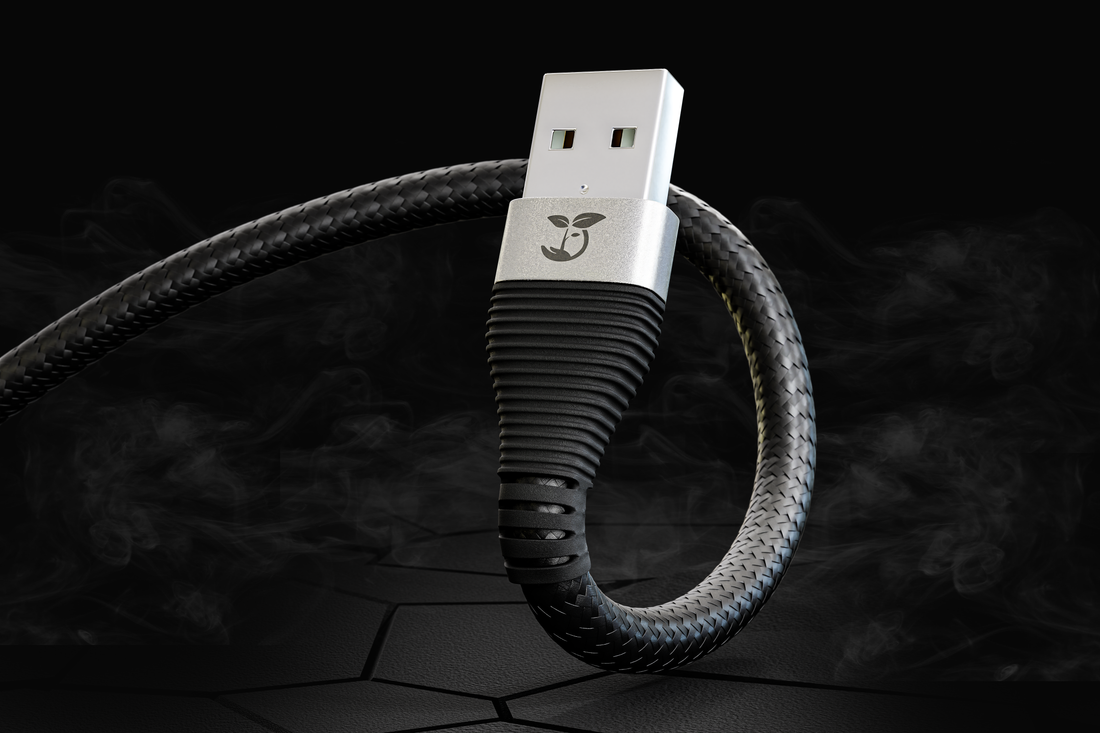Mastering Charging Cable Woes: A Comprehensive Guide to Troubleshooting and DIY Repairs
Table of Contents
Introduction
In the fast-paced digital era, where our lives are intricately woven with technology, charging cables have become indispensable companions. From powering smartphones to fueling laptops, these unassuming cables play a crucial role in keeping our devices alive. However, the convenience they offer can be abruptly disrupted when faced with charging cable issues.
This comprehensive guide delves into the world of troubleshooting common charging cable issues, empowering you to overcome frustrating setbacks. Whether you're grappling with slow charging, intermittent connections, or overheating problems, understanding the root causes and effective solutions is essential. Let's embark on a journey to unravel the mysteries of charging cable malfunctions and equip ourselves with the knowledge to keep our devices powered seamlessly.
Why Do Charging Cables Fail?
In the intricate ecosystem of electronic accessories, charging cables are not exempt from wear and tear. Understanding the reasons behind charging cable failures is pivotal in addressing issues effectively. Several factors contribute to the breakdown of these essential conduits, ranging from everyday usage to manufacturing nuances.
- Bending and Twisting:
- Frequent bending and twisting, often exacerbated by improper storage, can strain the internal wires of charging cables. This stress weakens the cable's structural integrity, leading to eventual failure.
- Exposure to Extreme Temperatures:
- Charging cables are sensitive to temperature extremes. Prolonged exposure to high or low temperatures can damage the insulation and internal components, impacting their ability to transmit power reliably.
- Poor Manufacturing Quality:
- The quality of materials and craftsmanship during the manufacturing process significantly influences a cable's lifespan. Cables of inferior quality are more prone to wear and tear, diminishing their overall durability.
By understanding these underlying factors, users can adopt proactive measures to extend the life of their charging cables and minimize the risk of encountering issues. In the subsequent sections, we will delve into the telltale signs of charging cable problems and guide you through effective troubleshooting steps.
Signs of Charging Cable Issues
Recognizing the early warning signs of charging cable problems is crucial for preventing inconvenience and device downtime. Whether you rely on your cable for daily smartphone charging or powering essential gadgets, being attuned to these indicators can save you from unexpected disruptions. Here are some common signs that your charging cable might be facing issues:
- Slow Charging:
- Experience a noticeable delay in your device's charging time? Slow charging can be indicative of cable damage, hindering the efficient flow of power from the source to your device.
- Intermittent Charging:
- If your device frequently connects and disconnects from the charger, it may suggest a loose connection within the cable or at the connectors. This intermittent charging can lead to incomplete charges and battery issues.
- Overheating:
- Excessive heat during the charging process is a red flag. Overheating may result from damaged internal wiring or a compromised insulation layer, posing risks not only to your cable but also to the connected device.
- Visible Wear and Tear:
- Physical inspection is key. Check for frayed wires, exposed internal components, or bent connectors. Any visible damage could be an indication that the cable is compromised.
By staying vigilant and recognizing these signs, you can take proactive measures to address charging cable issues before they escalate. In the upcoming sections, we will explore effective troubleshooting steps to help you identify and resolve these problems, ensuring a seamless charging experience for your devices.
Troubleshooting Steps
Encountering issues with your charging cable can be frustrating, but fear not – this section provides a detailed guide to troubleshoot and resolve common problems. Whether you're dealing with slow charging, intermittent connections, or overheating, these step-by-step solutions will help you identify the root cause and get your charging cable back in optimal working condition.
A. Inspecting the Physical Cable
- Examine the Connector Ends:
- Check for bent or broken pins in the connectors. Cleaning debris from the connectors can also ensure a secure connection.
- Inspecting the Cable Sheath:
- Identify frayed or damaged insulation along the cable. Ensure a secure connection between the cable and connectors.
- Checking for Visible Damage:
- Thoroughly inspect the entire length of the cable for cuts or breaks. Any visible damage may be the source of your charging issues.
B. Testing with Different Devices
- Using a Different Charger:
- Verify if the issue lies with the cable or the charging adapter by testing with an alternative charger.
- Testing on Multiple Devices:
- Ensure the cable functions properly across various devices. This helps pinpoint whether the problem is device-specific or cable-related.
C. Software and Settings Check
- Updating Device Software:
- Ensure your device has the latest firmware updates. Software glitches can sometimes mimic hardware issues.
- Adjusting Charging Settings:
- Check for specific charging settings that may affect cable performance. Adjusting these settings could resolve connectivity problems.
By following these troubleshooting steps, you'll be equipped to diagnose and address charging cable issues effectively. In the next sections, we will explore DIY cable repairs for those who prefer a hands-on approach and discuss when it might be time to consider replacing a charging cable.
DIY Cable Repairs: Restoring Life to Your Charging Cable
Taking matters into your own hands can be a cost-effective and empowering solution when dealing with charging cable issues. Before considering a replacement, explore these DIY cable repair techniques to breathe new life into your trusted accessory.
A. Fixing Frayed Wires
- Materials Needed:
- Heat shrink tubing
- Electrical tape
- Small heat gun
- Step-by-Step Repair Process:
- Carefully cut away the damaged section of the cable.
- Slide a piece of heat shrink tubing over each cut end.
- Twist the exposed wires together and secure with electrical tape.
- Heat the tubing with a small heat gun to shrink and seal the repair.
B. Reinforcing Connectors
- Materials Needed:
- Epoxy resin
- Small brush
- Step-by-Step Reinforcement:
- Apply a small amount of epoxy resin around the base of the connectors.
- Use a small brush to ensure an even coating.
- Let the epoxy cure according to the manufacturer's instructions.
These DIY repairs can significantly extend the life of your charging cable and save you from the inconvenience of a sudden malfunction. However, it's essential to note that not all issues are repairable. In the next section, we'll explore when it might be more practical to consider replacing your charging cable.
When to Replace a Charging Cable: Knowing the Signs
While DIY repairs can work wonders, there comes a point when it's more practical to bid farewell to an aging charging cable. Recognizing the signs that indicate irreparable damage or persistent issues can save you from ongoing frustrations. Here are key indicators suggesting it might be time to consider a replacement:
- Irreparable Physical Damage:
- If the cable has extensive cuts, breaks, or exposed wires that cannot be effectively repaired, it's a clear sign that the structural integrity is compromised.
- Persistent Issues After Troubleshooting:
- If you've diligently followed troubleshooting steps and the problems persist, it may indicate internal issues beyond the scope of DIY repairs.
- Safety Concerns:
- If the cable shows signs of overheating, sparking, or emitting a burning smell, continuing to use it poses a safety risk. In such cases, replacement is the safest course of action.
Regularly assessing the condition of your charging cable and recognizing these signs can help you make informed decisions about when to retire an old cable and invest in a reliable replacement. In the subsequent section, we'll share practical tips on how to extend the lifespan of your charging cables, minimizing the frequency of replacements.
Tips for Extending Charging Cable Lifespan: Prolonging the Power
Preserving the longevity of your charging cable involves adopting simple yet effective practices that can significantly extend its lifespan. Implement these practical tips to ensure your cables stay in optimal condition, reducing the need for frequent replacements:
- Proper Coiling and Storage:
- Avoid tightly coiling the cable, as this can lead to internal wire stress. Instead, loosely coil it and store it in a way that prevents kinks and bends.
- Using Cable Organizers:
- Invest in cable organizers to keep your charging cables neatly arranged and protected from potential damage. This prevents undue stress on the connectors and cables.
- Avoiding Extreme Temperatures:
- Store and use your charging cables in moderate temperatures. Exposure to extreme heat or cold can degrade the cable's insulation and impact its overall performance.
- Gentle Connector Handling:
- Handle connectors with care when connecting and disconnecting. Applying excessive force can damage the pins and connectors, leading to connectivity issues.
- Regular Inspection:
- Periodically inspect your charging cable for any signs of wear and tear. Early detection allows for timely repairs and prevents issues from escalating.
By incorporating these tips into your charging cable care routine, you'll not only save money on replacements but also ensure a reliable power supply for your devices. In the concluding section, we'll recap the troubleshooting steps, DIY repair techniques, and preventive measures covered in this guide, empowering you to maintain hassle-free charging experiences.
Conclusion: Empowering Your Charging Experience
In the realm of ever-evolving technology, the reliability of our charging cables directly impacts our daily lives. Navigating the intricacies of troubleshooting, DIY repairs, and preventive measures is key to maintaining a seamless charging experience.
By identifying early signs of cable issues, following effective troubleshooting steps, and implementing DIY repairs when feasible, you've taken significant strides toward extending the lifespan of your charging cables. Recognizing when it's time to bid farewell to an aging cable and adopting practices to prevent future issues further solidifies your mastery over cable care.
As you embark on the journey of optimizing your charging experience, remember that a well-maintained cable not only enhances device performance but also contributes to a more sustainable and cost-effective tech lifestyle. With these insights and practical tips, you're empowered to navigate the world of charging cables with confidence, ensuring your devices stay powered up when you need them most.
And for those seeking the convenience of one cable to rule them all, explore the Brothers4Change 3-headed cable, which comes with a 5-year repair warranty. Here's to hassle-free charging and uninterrupted connectivity!

